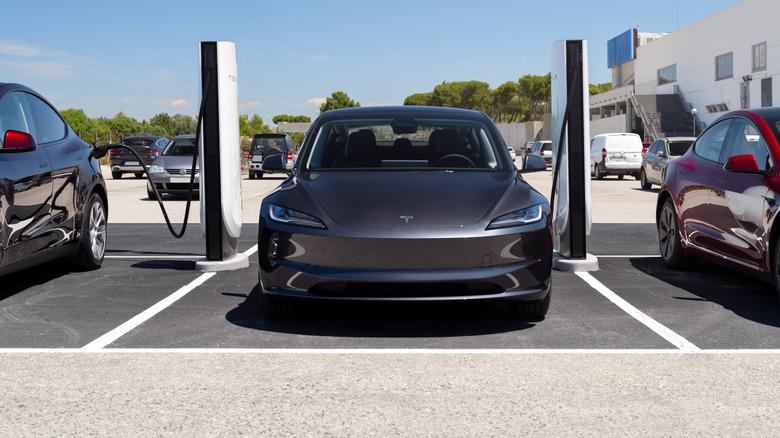Why Are People Stealing Tesla Supercharger Cables?
People are stealing Tesla Supercharger cables for one simple reason. Like every electric vehicle (EV) charging cable, Tesla's charging cables are made of copper, a metal that generates enough cash for thieves to make it worth stealing. As a point of reference, Tesla has 2,529 Supercharger stations that contain 29,601 Tesla Supercharger ports in the US alone. Worldwide, Tesla provides more than 60,000 Supercharger ports — that's a lot of copper cables.
As EV charging stations have grown in both size and number, they have become an increasingly large target for those who cut off the charging cables and take them to scrap metal dealers for some quick cash – as much as $5.20 per pound. Some Tesla Supercharger stations, which support every electric car in the US, have even been hit by thieves just before they opened to the public for the first time. This not only can disable the station (depending on how many of its cables were stolen) but also prevents the people traveling in that area from charging and continuing on their trips. Some Tesla Supercharger stations have been hit repeatedly. Since Tesla has opened up its Superchargers to other EV brands, this will become a more pressing problem.
It takes some effort to cut the cables away from the chargers since Tesla's cables are around four and a half inches thick. The thieves must then remove the rubber insulation, the cable's cooling system, and the charging connector that plugs into the electric car. That's a lot of work for $200 worth of copper, but Tesla Supercharger cables remain a target.
What is Tesla doing to prevent the theft of its cables?
Tesla has recently adopted an experimental two-pronged approach to keeping its charging cables secure and preventing stolen cables from being sold for scrap. One of these strategies involves the installation of "DyeDefender" anti-theft tech to discourage cable thefts. This technology was originally developed as an add-on by a company named Catstrap, which also makes catalytic converter anti-theft devices. For Tesla cable theft prevention, the DyeDefender uses a wrap that covers each cable and releases a blue dye under pressure when the cable is cut, spraying the thief with a heavy coating of the dye. In the words of the Catstrap company, the DyeDefender represents "...the perfect combination of "revenge factor" with a safe, reliable, durable product."
The other anti-theft strategy being tried by Tesla to protect their cables is being put into place at the Buffalo, New York plant where Tesla's charging cables are produced. The company will engrave "Property of Tesla Motors" on the copper cables. Tesla hopes that any reputable scrap dealers will turn away sellers who bring in copper clearly identifiable as having been stolen from a Tesla Supercharger. These scrap dealers could then notify Tesla about the presence of the stolen copper cabling, potentially leading to the apprehension of the thieves.
These methods to prevent Tesla Supercharger cable theft are in the trial stage and may be rolled out further if they provide the desired results. As long as copper is worth stealing, there will be those who steal it.
